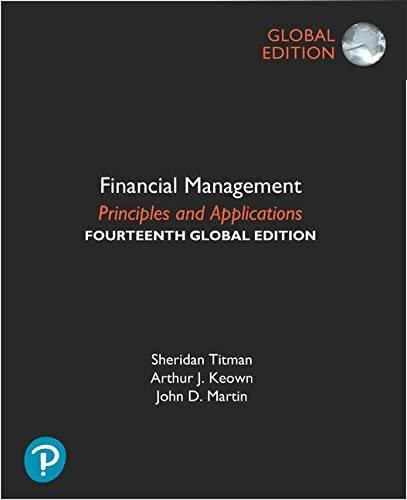
A building contractor has managed to buy and obtain planning permission for housing on 20 000 m of land. The contractor can build three types of house: Starter, Family and Deluxe. The following table shows the amount of land required and the profit expected for one house of each type. Type Land (m) Profit () Starter 150 20 000 Family 300 30 000 Deluxe 400 45 000 The planning permission is for a maximum of 80 houses to be built (in total, regardless of type), so that local facilities are not overwhelmed. In addition, to help first-time buyers, at least 30% of the houses built must be Starter houses. The contractor wants to know how many of each type of house to build in order to maximize her total profit from the sale of the houses (assuming that she can sell all the houses that she builds). (a) Formulate the contractor's problem as a linear programming model in standard form, without using matrices. Scale the constraints and objective function as appropriate, to make the model easy to manipulate. (b) Express the model in canonical form, using matrices, and show that the all-slack point is feasible. Perform one iteration of the matrix version of the simplex method for this model, starting from the all-slack point. State the new basis list, the new feasible point and the value of the objective function at that point. (c) Due to supply issues, it is not worth the contractor building Deluxe houses unless she can build at least 15 of them. Explain how you would model this change, by showing any additions or amendments to variables and constraints, compared to the previous model. [6] [6] [3] A building contractor has managed to buy and obtain planning permission for housing on 20 000 m of land. The contractor can build three types of house: Starter, Family and Deluxe. The following table shows the amount of land required and the profit expected for one house of each type. Type Land (m) Profit () Starter 150 20 000 Family 300 30 000 Deluxe 400 45 000 The planning permission is for a maximum of 80 houses to be built (in total, regardless of type), so that local facilities are not overwhelmed. In addition, to help first-time buyers, at least 30% of the houses built must be Starter houses. The contractor wants to know how many of each type of house to build in order to maximize her total profit from the sale of the houses (assuming that she can sell all the houses that she builds). (a) Formulate the contractor's problem as a linear programming model in standard form, without using matrices. Scale the constraints and objective function as appropriate, to make the model easy to manipulate. (b) Express the model in canonical form, using matrices, and show that the all-slack point is feasible. Perform one iteration of the matrix version of the simplex method for this model, starting from the all-slack point. State the new basis list, the new feasible point and the value of the objective function at that point. (c) Due to supply issues, it is not worth the contractor building Deluxe houses unless she can build at least 15 of them. Explain how you would model this change, by showing any additions or amendments to variables and constraints, compared to the previous model. [6] [6] [3]







